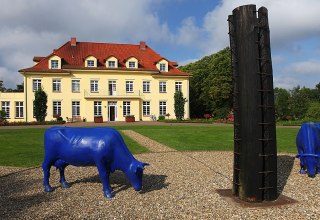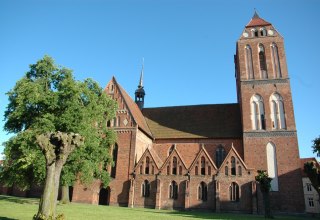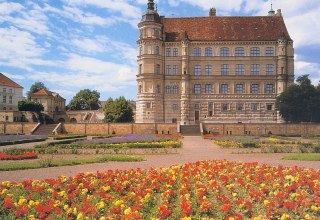The Güstrow parish church stands on the market square in the immediate vicinity of the town hall. The first documented mention of the parish church dates back to 1308. After the fire in the center of Güstrow in 1503, which also destroyed the church, it was rebuilt and consecrated in 1508. When you enter the parish church, the first thing you see is the completely restored Jan Borman altar from 1522. This work of art, the ornate pulpit, the impressive organ and a small Barlach angel are already reasons enough to take a look around. But there is one very special highlight that you should not miss: 196 steps lead up to the 41 meter high observation deck of the highest building in Güstrow. A magnificent view over the city and Heidberge, the lakes and the meadows leaves many tourists amazed.
The first documented mention of the parish church dates back to 1308. After the fire in the center of Güstrow in 1503, which also destroyed the church, it was rebuilt and consecrated in 1508. According to the plans of the architect Georg Daniel, the church was extensively rebuilt from 1880 to 1883 into a three-nave hall church with a straight east end, three gable roofs over the naves and a side hall with a west tower. The large winged altar from 1522, a work from the workshop of the Brussels carver Jan Borman, is one of the outstanding art treasures of the church.
The panel paintings of the altar were painted by the Brussels artist Bernaert van Orley. The Triumphal Cross Group (1516), the Madonna in the Radiant Wreath, the sandstone pulpit (1583) by the Antwerp-born master Rudolf Stockmann, the council stalls with valuable inlay work (1599) by the Rostock artist Michel Meyer, and numerous Renaissance epitaphs are among the valuable furnishings.
The organ with 41 stops was built by Paul Schmidt in 1764/1765. The magnificent organ prospect and the gallery in the rococo-baroque style also date from this time. The oak figure of the mourning Mary with the body of Christ, a Pietá from the end of the 15th century, is the oldest work of art in the church.But modern art is also represented in the imposing brick church. Since 1979, the "Angel of Hope"(1933), a terracotta relief by Ernst Barlach, has been located on the right pillar to the chancel.
The ascent in the tower up to the baroque tower dome is not easy. But the effort is rewarded with a wide view of the Mecklenburg landscape.

























